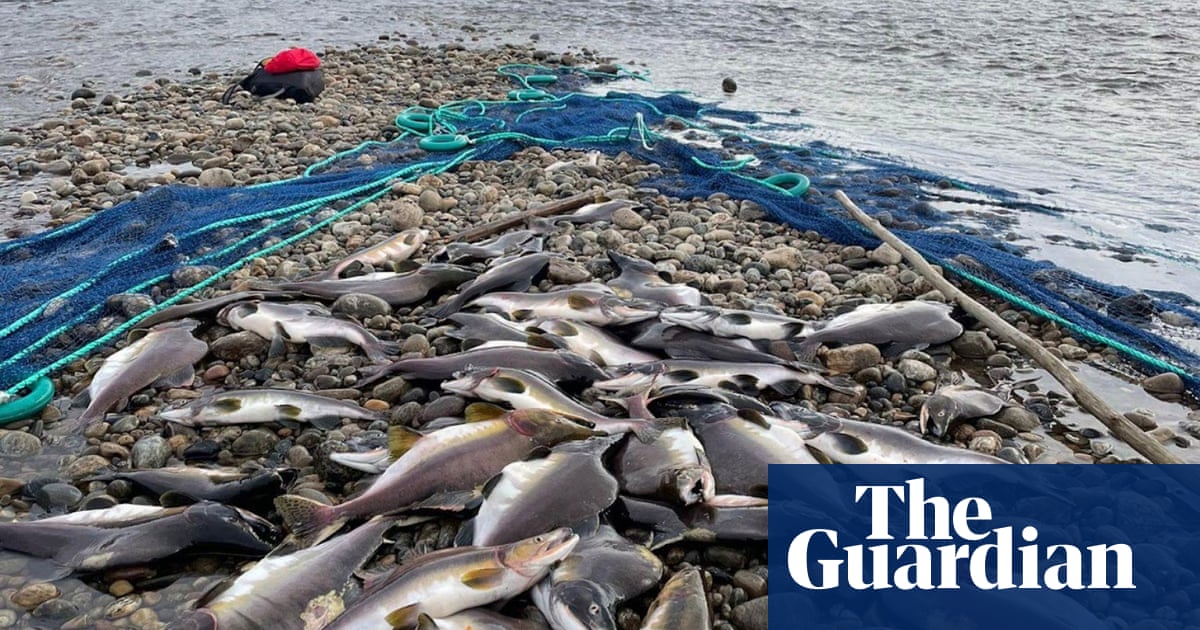
Salmon anglers have called for urgent action to protect Scotland’s wild salmon after the lowest number on record were caught last year.
The latest official data shows that 35,693 Atlantic salmon were caught by anglers on Scottish rivers last year, the lowest number since records began in 1952 and just 75% of the average over the last five years.
The figures for sea trout, a species that uses the same rivers as salmon, were also the lowest on record, at 12,636 and 77% of the latest five-year average.
Last year’s catch figures were affected by Covid lockdowns during spring 2021, but the data is consistent with recent trends. In 2018, the last full year before the pandemic, the wild salmon catch set the previous record low of just over 37,600. In 2010, anglers caught over 111,400 salmon.
The data has alarmed fisheries experts and ecologists. Wild salmon and trout are a keystone species for many mammals and birds, and a plunging fish population harms other creatures such as otter, osprey and mergansers, damaging the wider ecosystem.
Salmon are highly sensitive to water temperature and reduced water purity. Their decline is seen as unequivocal evidence that the climate crisis, pollution, fish farming and industrial activities are causing wider environmental harm.
Alan Wells, the director of Fisheries Management Scotland, urged the Scottish government to accelerate its new strategies for enhancing and protecting salmon stocks. “The latest figures underline just how grave the situation has become. We are urging the government to deliver its existing commitments without delay, and to go much further in all the areas where they have the power to make a difference,” he said.
In January the government agreed that the wild salmon population was in crisis. It promised to improve water quality, review the enforcement of conservation laws, reduce conflicts with human activities at sea and in coastal areas, and strengthen marine conservation efforts.
Since the 1990s anglers in Scotland have returned their catch to the river under a voluntary conservation code that is heavily policed by fisheries organisations and ghillies, the experts who guide anglers on many fishing beats.
Alongside removing dams and weirs, the country’s district fisheries boards have pledged to plant millions of native trees along thousands of miles of riverbank to lower water temperatures and reduce flash floods. “Trees act like natural parasols,” Wells said.
Some fisheries have investigated restocking heavily depopulated rivers with young salmon bred in hatcheries from local wild stocks, although the strategy remains controversial because of uncertainty about their survival rates.
Landowners and salmon experts along the Carron, a river that empties into Loch Carron in Wester Ross, to the north of Skye, believe their reintroduction of hatchery fish has saved its wild salmon population from near extinction.
A succession of very heavy spate or flood events on the Carron in the late 1990s wiped out young salmon, leaving it with a five-year average catch of just 10 salmon. By 2020 that had climbed to 187.
Wells said restocking programmes could work in some rivers, but the heaviest emphasis was needed on ensuring rivers and the wider environment were improved and protected.
“There’s no one golden bullet here,” he said. “What we have to do is have concerted action across a range of pressures and policy areas. To make sure that the bed and board for salmon is as good as it possibly can be, and we maintain water temperatures optimal for salmon.”












